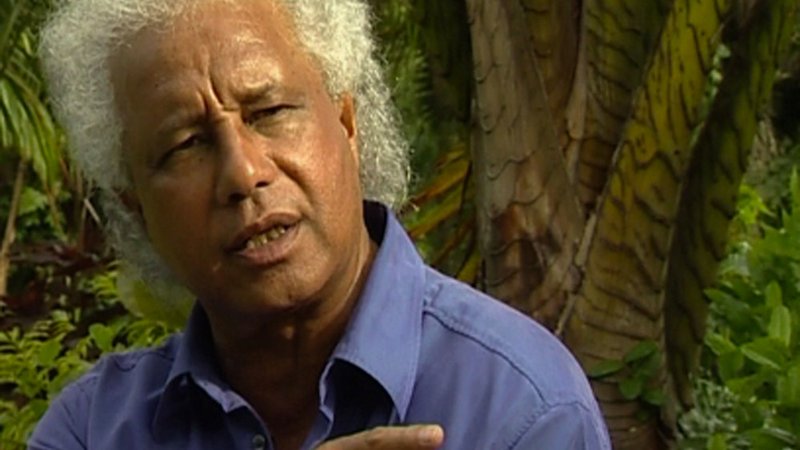Shirley Horrocks’ portrait of novelist, poet and educator Albert Wendt provides insight into a charismatic, intellectual Pacific man who continues to make a very real difference.

Screened as part of NZIFF 2005
The New Oceania 2005
Albert Wendt is probably the best-known writer in the South Pacific. Novelist, poet and educator, he has also been a tireless teacher and promoter of creative writing across the Pacific. Made by Shirley Horrocks for TV One, this portrait draws its title from his essay, an early manifesto that encouraged all Pacific cultures to embrace change and accept the need for dissent: ‘Without it our cultures will drown in self-love.’ The film, which traces Wendt’s life and career with constant reference to his own frequently autobiographical writing, measures the significance of the manifesto by doubling as a history of cultural renewal in the Pacific.
Wendt was born in Apia, of mixed German and Polynesian ancestry. In his childhood he was fascinated by his Samoan grandmother’s storytelling – poems, chants, legends and myths of her own people. He won a government scholarship to study in New Zealand, and attend high school in New Plymouth, where he began writing for himself. He was encouraged by the example of Robert Louis Stevenson, who spent the last years of his life on Wendt’s home island of Upolu, dying there in 1894. Eventually he went to Victoria University. A love affair with a white fellow student was the basis for Wendt’s best-selling first novel Sons for the Return Home. Now dividing his life between New Zealand, Samoa and other parts of the Pacific, he is the author of numerous novels, short stories, poems, essays and, in 2003, the play The Songmaker’s Chair. Today the Pacific’s academic institutions heap honour o Wendt, and a new generation of Pacific artists – Black Grace, Sima Urale, Tha Feelstyle – warmly acknowledge his groundbreaking example.
Shirley Horrocks’ films about Marti Friedlander (Marti: The Passionate Eye) and Allen Curnow (Early Days Yet) have featured in recent Festivals. Her careful, appreciative portraits of the lives and works of New Zealand artists provide valuable accounts of cultural life in New Zealand, while easing the subjects into ample expression of their personalities. Travelling to Samoa with Wendt, talking to family and colleagues, and drawing on the rich archival heritage of filmed adaptations and earlier interviews, she delivers a rounded and engaging portrait of a charismatic, intellectual Pacific man who continues to make a difference. — BG